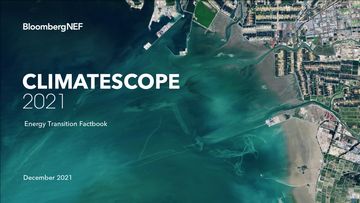Guatemala
With a cumulative score of 1.65, Guatemala ranks number 35 among emerging markets and number 64 in the global ranking.
- Emerging markets
- Americas
1.95 / 5
Power score
0.93 / 5
Transport score
Buildings score
Only 56 markets (28 emerging markets) are scored on the Buildings sector. See the full list on the methodology page.
Low-carbon strategy
Net-zero goal and strategy
Guatemala has set neither a net-zero emissions goal nor a long-term low-carbon strategy.
Nationally Determined Contributions (NDC)
Guatemala submitted a ‘nationally determined contribution’ (NDC) – its plan to help achieve the goals of the Paris Agreement – in 2017. It aims to lower its greenhouse gas emissions by 11.2% by 2030 compared to a business-as-usual scenario from 2005 levels. If it were to receive additional financial and technical support from both public and private international resources, the country says it could achieve a 22.6% reduction in emissions by 2030. The sectors being targeted for mitigation are forestry, agriculture, and transport.
Fossil fuel phase-out policy
Guatemala does not currently have a fossil fuel phase-out policy.
Power
Power policy
Guatemala has a target for 64% of its electricity to be generated from renewable sources by 2032. Renewables comprised a 32% share in 2019, suggesting additional investment will be required.
To incentivize renewables development, it has a net metering program that enables surplus power to be sold back to the grid. The country also launched a tender for 110 megawatts (MW) of solar capacity in May 2019. However, due to a lack of feasibility studies and inconsistencies in proposals from bidders Total Eren Guatemala S.A and Corporacion Klondike S.A., the tender was canceled in August of that year. The government intends to repeat the exercise, but has yet to set a timeline for this process.
Power policies
Power prices and costs
After dropping in 2019, commercial and industrial electricity prices remained steady in 2020. However, retail prices rose by 3% to $62 per megawatt-hour. Guatemala has some of the highest retail prices in Latin America, and alongside increased volatility and rising electricity access rates, this has intensified political pressure to stabilize and reduce consumer prices. Guatemala now spends as much on residential electricity subsidies as it does on its two largest social assistance programs combined.
Power market
The power market in Guatemala is unbundled. The country has 50 private and state-owned companies providing generation, distribution, and transmission services. Guatemala is connected via the Central American Electrical Integration System (SIEPAC) to Honduras and El Salvador. Northern Guatemala is also connected to Mexico’s transmission system.
Installed Capacity (in MW)
Electricity Generation (in GWh)
Utility privatisation
Which segments of the power sector are open to private participation?
Wholesale power market
Does the country have a wholesale power market?
Doing business and barriers
Formal barriers to renewables development in Guatemala are low. Tax incentives to promote installations have been available since 2003. These include import tax and value-added tax breaks for machines, equipment, materials and inputs for investment and construction; income tax breaks; and industrial tax breaks valid for 10 years from when a plant starts operating.
Currency of PPAs
Are PPAs signed in or indexed to U.S. Dollars or Euro?
Bilateral power contracts
Can a C&I (Commercial and Industrial) customer sign a long-term contract (PPA) for clean energy?
Bilateral power contracts
Can a C&I (Commercial and Industrial) customer sign a long-term contract (PPA) for clean energy?
Bilateral power contracts
Can a C&I (Commercial and Industrial) customer sign a long-term contract (PPA) for clean energy?
Fossil fuel subsidies
Does the government influence the wholesale price of fossil fuel (used by thermal power plants) down through subsidies?
Fossil fuel taxes
Does the government influence the wholesale price of fossil fuel (used by thermal power plants) up through taxes?
Transport
EV market
Guatemala’s electric vehicle (EV) market is at an early stage but is set it grow over the next decade. Even under the government’s most pessimistic modeling scenario – which is based solely on price competitiveness without supportive policies – it projects that EVs could displace 20% of sales of new internal combustion vehicles between 2017-2021, rising to 50% between 2022-26, and 70% between 2027-2030.
EV policy
Guatemala offers tax incentives to support the purchase of electric vehicles (EVs). It has also been proposed that the vehicle circulation tax, known as ISCV, be applied to EVs in a phased manner. This would mean there is no tax in the first year of ownership, and the exemption would gradually decrease until the full tax is required from somewhere between the fifth and tenth year.
Transport policies
Fuel economy standards
Does the country have a fuel economy standard in place?
Buildings
Buildings market
The country published its National Energy Efficiency Plan in 2019, which aims to reduce energy consumption by 15% by 2032 versus a business-as-usual trajectory. This includes targets for energy savings of 30% for the public sector institutions, 25% for industry, and 18% for the residential sector.
Energy performance standards
Are there minimum energy performance standards for buildings?
Energy efficiency plan
Does the country have a national energy efficiency plan?
Buildings policy
In the residential sector, burning wood has historically accounted for the vast majority of energy consumption to due to a variety of socioeconomic, geographic and cultural factors. The government is encouraging the purchase of more efficient wood-burning stoves, which could see a household’s monthly consumption of firewood cut in half. It is also promoting the use of more efficient gas and electric alternatives. In addition, Guatemala is looking to improve the quality of power systems and electrical equipment inside homes to mitigate technical losses from these installations.

